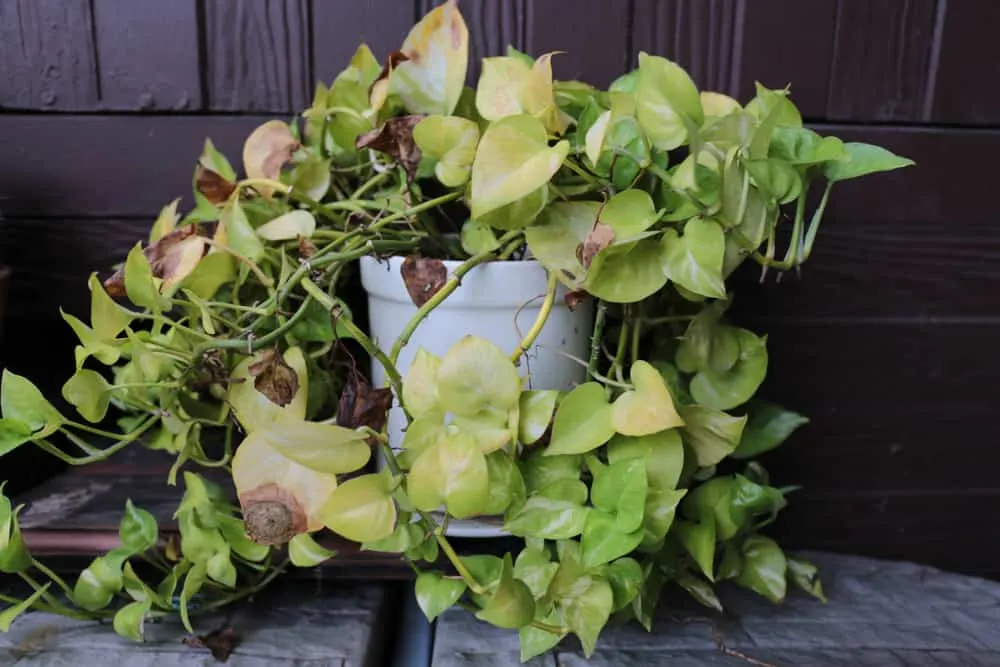
Anyone interested in houseplants likely has at least one Pothos in their home.
These stunning trailing vines are incredibly popular, gracing the homes of houseplant parents across the world. They are also low-maintenance, topping the list of the most beginner-friendly houseplants.
They are also incredibly easy to propagate so you can turn one pothos into many. Here’s our tutorial for propagating pothos.
However, their ease of care does not mean they are not prone to problems.
Issues like overwatering, incorrect light levels, or pests and diseases can cause a range of problems in your Pothos plants. Luckily, when you identify the signs, there are steps you can take to fix the problem and get your Pothos back to good health.
1. Yellow Leaves
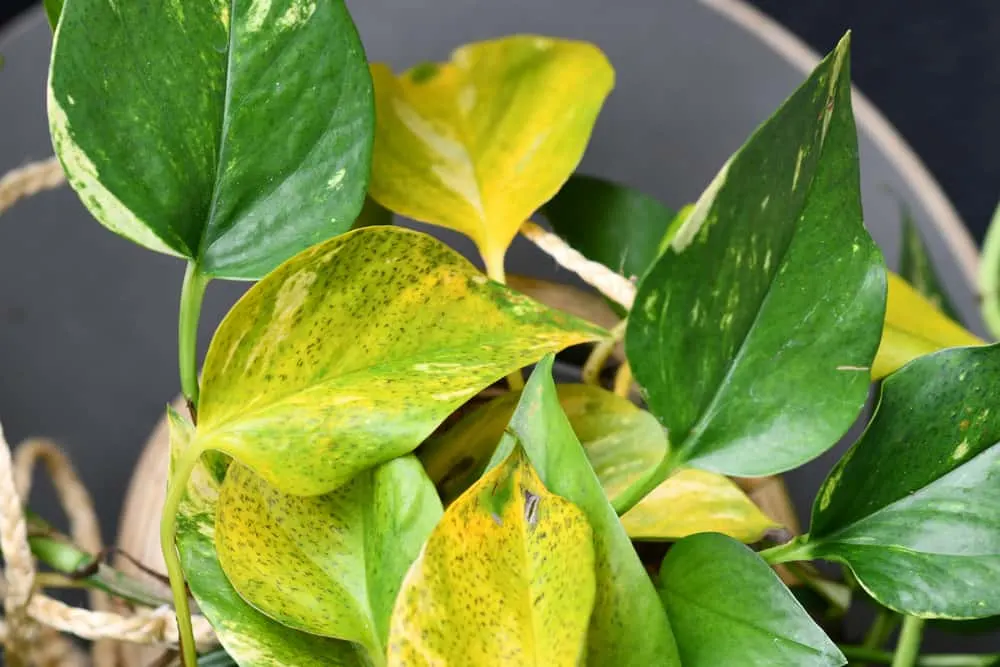
Yellowing leaves are a common houseplant issue. Unfortunately, as there are many causes for yellowing leaves, the true cause can be difficult to pin down.
The most common cause of overwatering is also one of the number one plant killers – overwatering.
Pothos plants prefer their soil to dry out slightly before watering again. If the soil remains moist for too long, either because the soil does not drain well enough or because the pot doesn’t have any drainage holes, it can begin to rot the roots.
Pothos plants with root rot cannot take up any water or nutrients to keep the plant growing, resulting in the yellowing of the leaves. Yellowing leaves combined with mushy stems and consistently wet soil are a surefire sign of root rot.
Root rot can kill entire plants if not addressed immediately. To resolve the problem, remove the plant from the pot and trim off all the affected roots back to the healthy growth. Repot into fresh soil as the fungus can remain in the old soil and spread to the new roots.
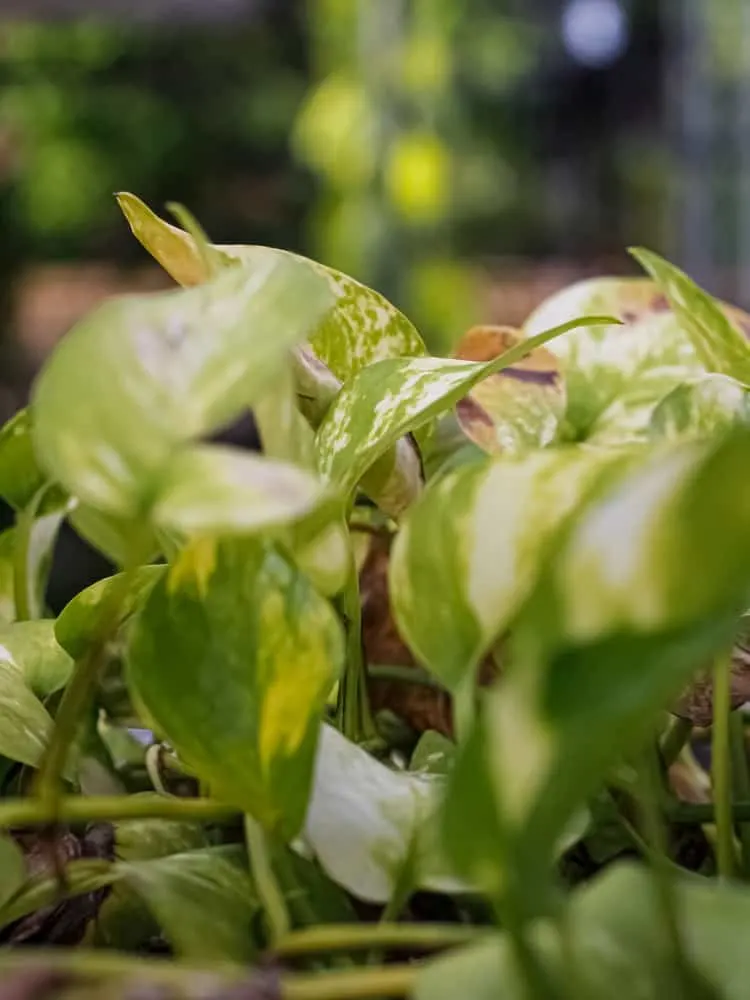
Yellowing leaves can also be caused by a nutrient imbalance in the soil. This is either the result of a lack of nutrients (usually if the plant has been the in the same pot for several years without any additional nutrients) or overfertilizing.
While Pothos plants do need additional nutrients around once a month during the growing season, fertilizing more often, or using more fertilizer than recommended, will not result in better growth as some may expect.
It actually has the opposite effect, burning the roots and damaging the plant.
If the leaves start to turn yellow soon after you have fertilized, flush the soil with distilled water and stop fertilizing for a few months. Make sure you follow the instructions on the packaging and dilute correctly, or use fertilizer at half strength, to avoid causing any further damage.
2. Brown Spots
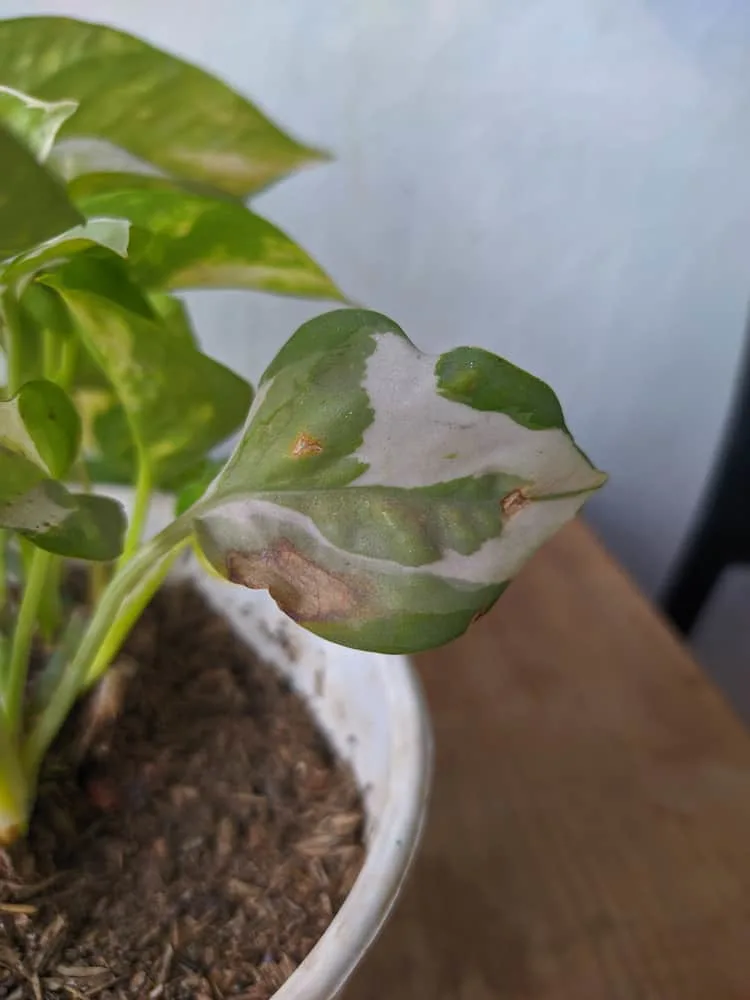
Yellowing leaves are not the only discoloration that is a cause for concern. Brown spots are also an issue, and often indicate a greater problem if not dealt with quickly, as brown leaves will never return to their lush green color again.
Brown spots are usually the result of exposure to direct sunlight. Pothos are tropical plants that are used to dappled sunlight in their natural habitats. Indoors, they grow best in bright indirect light, but can also handle moderate to low light quite well.
What they can’t handle, is direct sun.
Pothos plants exposed to intense direct sunlight for long periods will actually burn, with affected areas of the leaves turning brown. This usually occurs when the plants are left in front of south or west-facing windows without any protection. If the side of the plant facing the light source displays the brown spots, you can be sure sunlight is the issue.
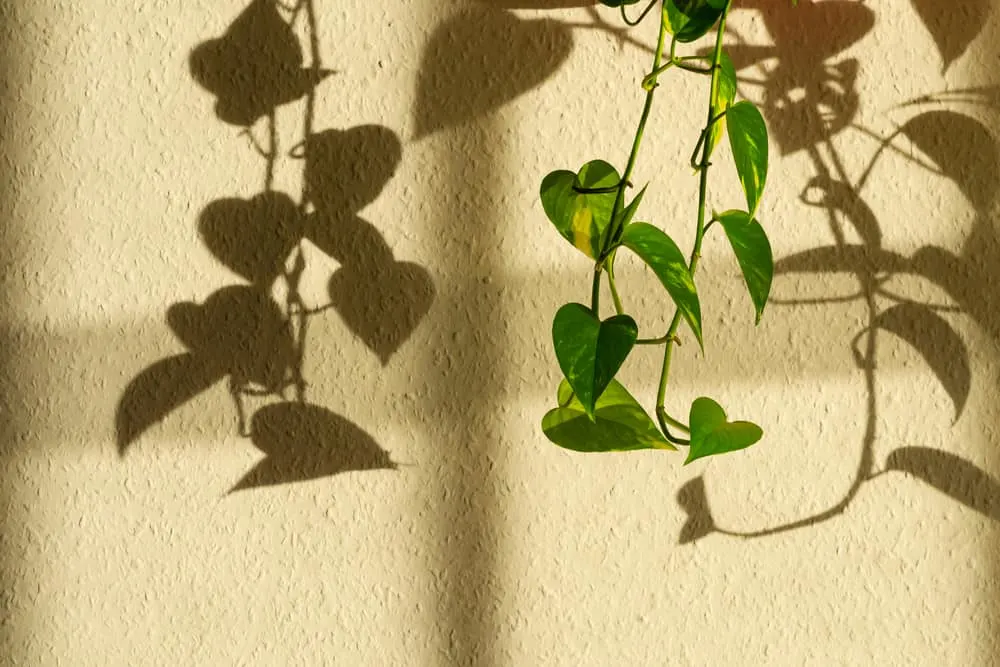
Luckily, the fix is incredibly easy. Move your plant to a spot away from the direct sunlight, or cover the window with a sheer curtain.
Another possible cause of brown spots on leaves is disease. Pothos are not majorly susceptible to disease, but they are not immune either. Diseases like Southern Blight or Bacterial Wilt can cause parts of the leaves to turn brown and die off.
Prune off all the affected leaves and stems as soon as you spot them to avoid the problem spreading. Unfortunately, as severe disease is very difficult to eradicate, you may need to discard the whole plant. This will protect other houseplants in your home from succumbing to the same fate.
3. Brown Tips
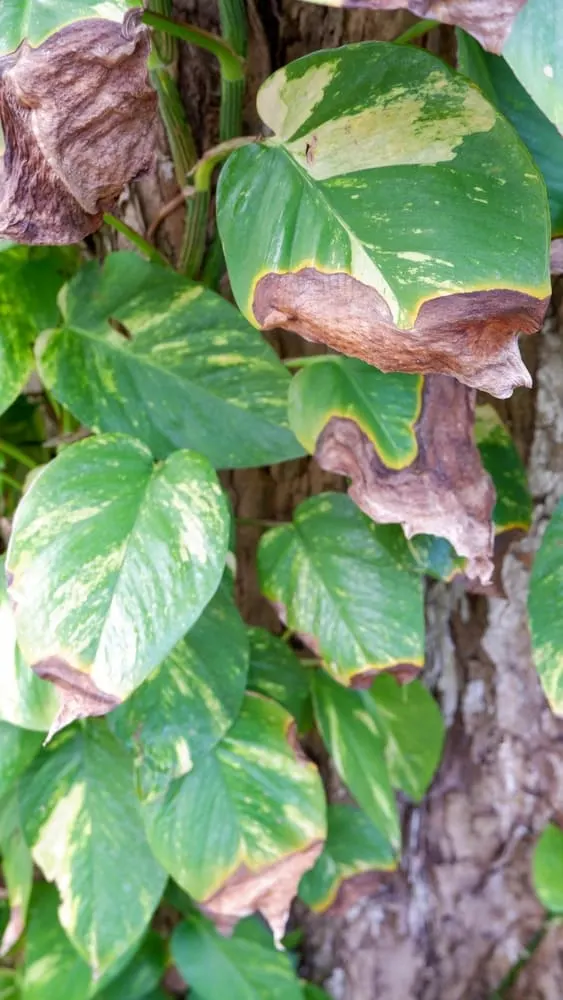
Brown spots on leaves typically occur in irregular and expected patterns. But, Pothos leaves can also turn brown at the tips, indicating a different issue.
The two most common causes of browning tips are underwatering and lack of humidity. Both issues relate to the level of moisture in the leaves. When the leaves lack moisture, they begin to dry out at the edges furthest away from the stems.
Pothos should be watered as soon as the top few inches of soil dry out. While they prefer dry soil to wet soil, they shouldn’t be left in completely dry soil for long periods. Start by watering your plant from the bottom to completely saturate the soil. Then, water more frequently by regularly checking the soil moisture or using a moisture meter.
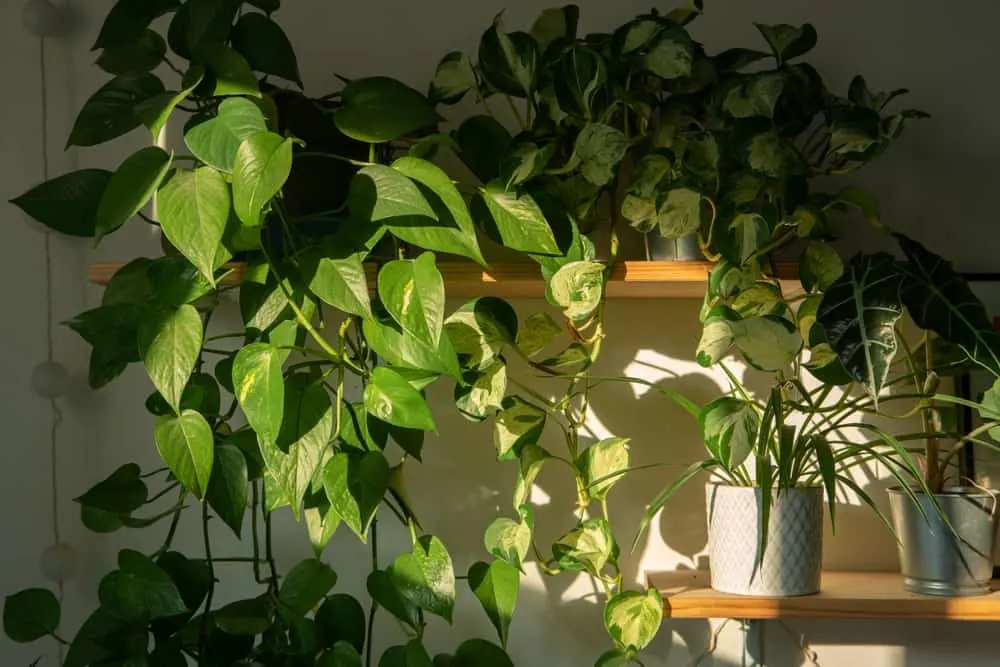
Lack of humidity can also cause the same browning on the edges of the leaves. Pothos are not as fussy about humidity as some other houseplants, but they do require humidity above 40% to grow their best.
Low humidity triggers the plant to conserve moisture by limiting evaporation. When evaporation slows, the overall heat of the plant increases and ultimately dries out the leaves if the problem is not resolved.
To improve the humidity around your plants, you can place the pot on a tray filled with pebbles and water. However, as this only improves humidity slightly, it won’t improve conditions if they are well below 40%.
The best option is to invest in a humidifier. This will provide the perfect conditions for your Pothos and many other houseplants.
4. Wilting or Curling
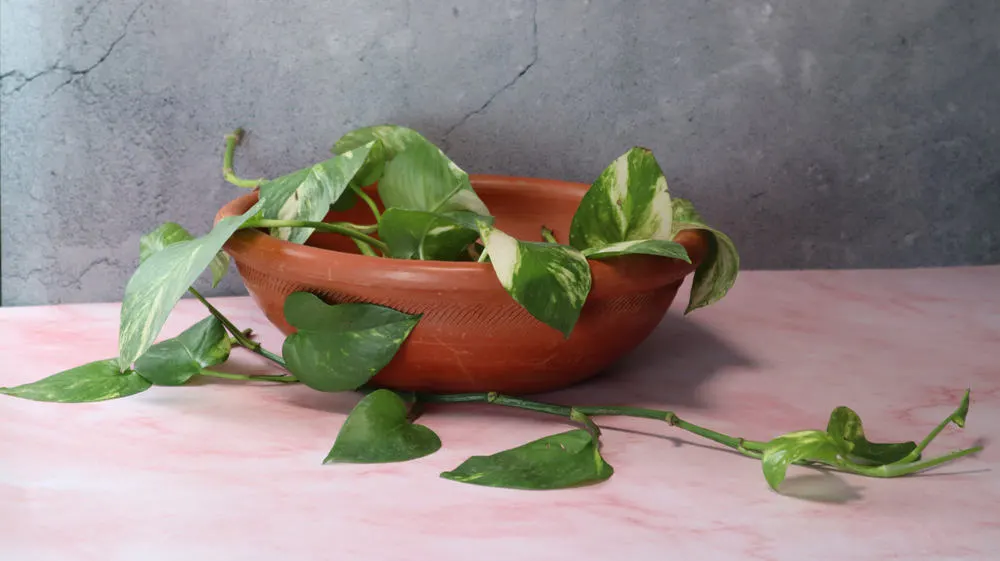
Along with brown tips, wilting or curling leaves are also a sign of a moisture issue. Most often, this is related to underwatering.
When the cells of the plant lack moisture, they cannot fill out the leaves and hold the plant up, resulting in the wilting appearance. When you water, the shape of the leaves should return to normal.
Conversely, wilting leaves can also be a sign of overwatering. When your Pothos is overwatered and experiencing root rot, the roots struggle to take up moisture through the mushy stems, causing the leaves to wilt.
If wilting leaves are accompanied by moist soil that doesn’t dry out, overwatering is likely the issue.
Leaves curling inwards are also a sign of excessive sunlight. When the leaves are exposed to direct sunlight for too long, they start to curl inwards to protect themselves and conserve moisture. Move the plant to a spot with lower light and they should slowly return to normal.
5. Spotted Leaves
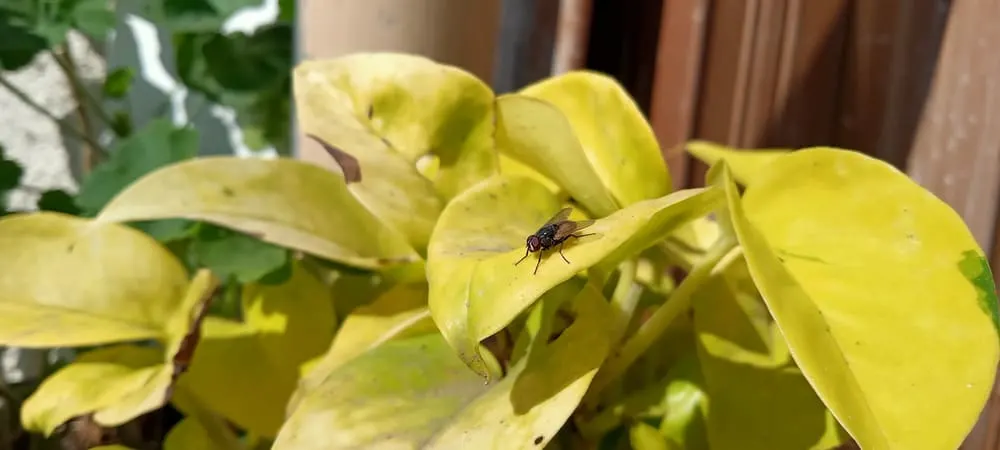
Pothos leaves are often spotted due to their variegation patterns. However, brown, yellow or black spotting in irregular groups is a cause for concern. Small spots, usually accompanied by leaf deformation, indicate some kind of pest problem.
Pothos plants are susceptible to several pests. Spider mites and mealybugs are some of the most common, but they can also be home to thrips, whiteflies, aphids, and scale. These bugs hide under the leaves and feed on the sap and leaf and stem tissues of the plants, causing those parts of the leaves to die off and change color.
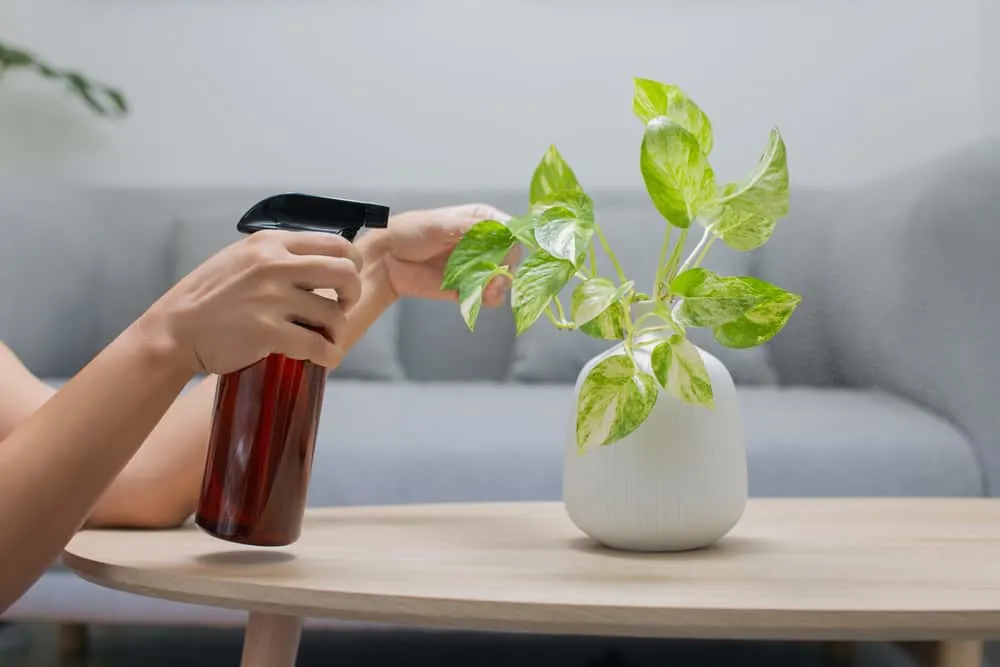
Homemade insecticidal soaps or horticultural oils will rid your Pothos of any pest problems. They work by suffocating the existing bugs and preventing any eggs from hatching. Sticky traps are also suitable for flying pests like whiteflies or fungus gnats.
Once the pests are removed, prune any excessively damaged leaves to promote new and healthy growth.
6. Stretched Vines
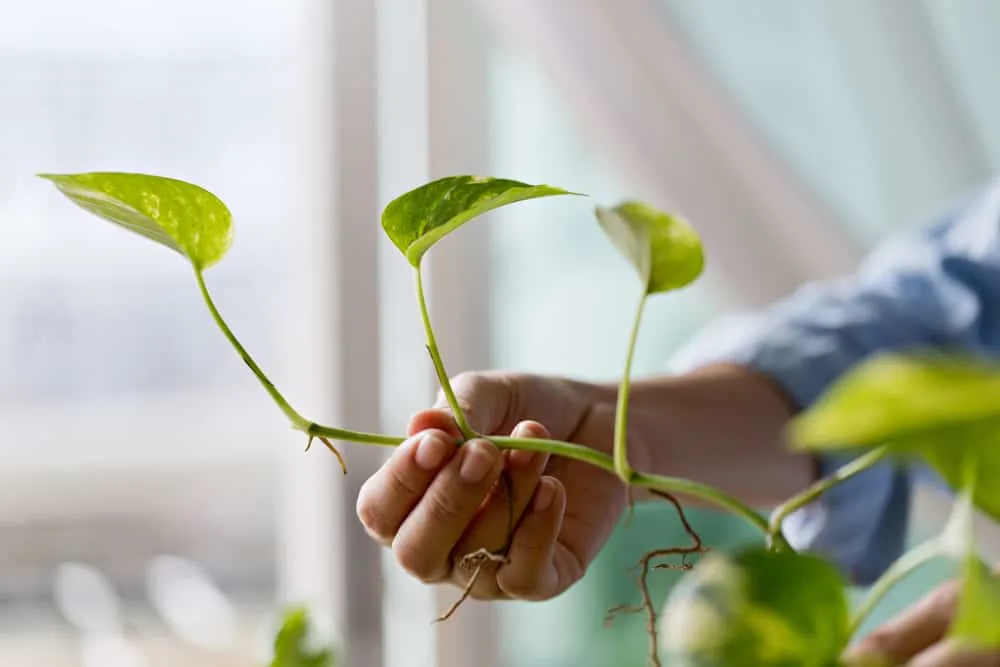
We all want our Pothos to have lush, bushy leaves. So, when the leaves and stems become sparse and diminished, it is understandably concerning. If your previously healthy Pothos starts to stretch, with leaves growing further and further apart, low sunlight levels are the problem.
Pothos are known to tolerate low light levels quite well. However, that does not mean they can grow with no light at all. If the plants are placed in a very dark corner, or a room with no windows, they will begin to exhibit growth issues like stretching stems.
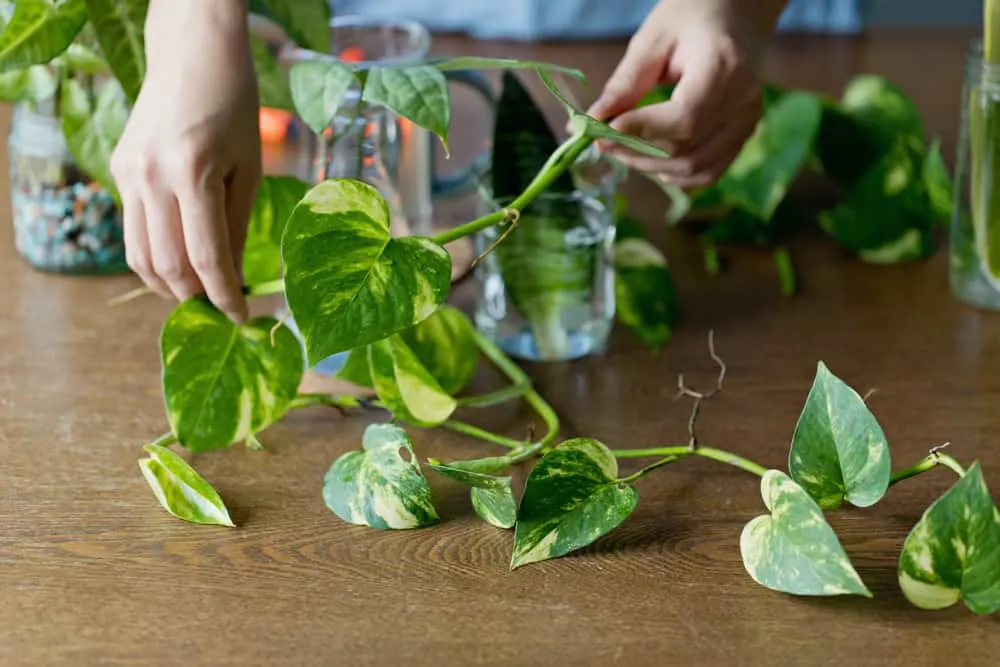
The stems begin to stretch in order to search for a better light source. You may notice them growing towards any nearby light sources if sunlight is an issue.
Simply move them to a bright spot to improve growth. Unfortunately, the stretched stems will not grow back to normal, but pruning them back can encourage new, healthy and compact growth.
7. Lack of Variegation
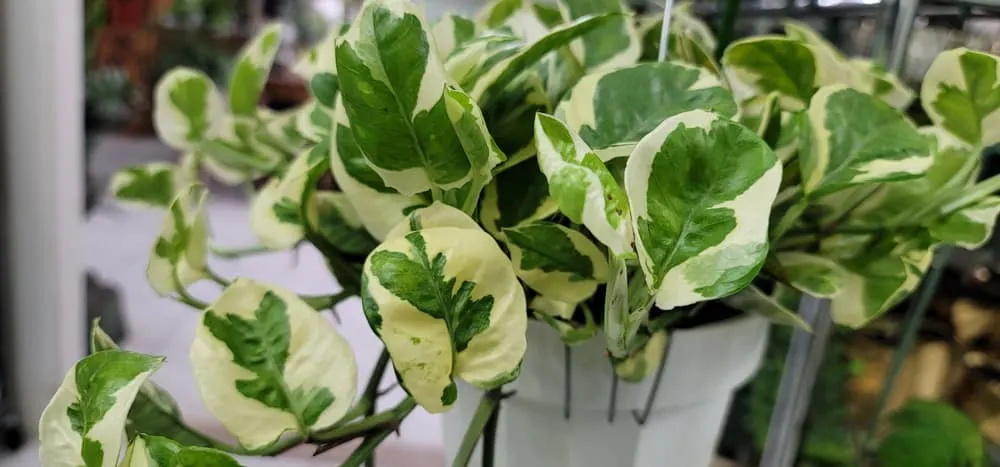
Pothos are beloved for their many variegation patterns. Whether you’ve purchased the heavily variegated Snow Queen, or the more subtle Marble Queen, you’ll certainly want to retain these stunning looks.
But variegation is not always stable, and the leaves can revert back to green if not given enough sunlight.
Heavily variegated leaves contain far less chlorophyll than their non-variegated counterparts. This chlorophyll is essential to the process of photosynthesis that spurs growth and keeps the plant alive.
When the plant is under low light conditions, the plant produces more chlorophyll to make up for the lack of photosynthesis, turning the variegated sections green again.
If the leaves start to lose their variegation, move the plant to a brighter spot in your home. The more variegated the plant is, the more bright indirect light they need to thrive. With a few weeks in brighter light, the leaves will slowly become more variegated over time.
8. Stunted Growth
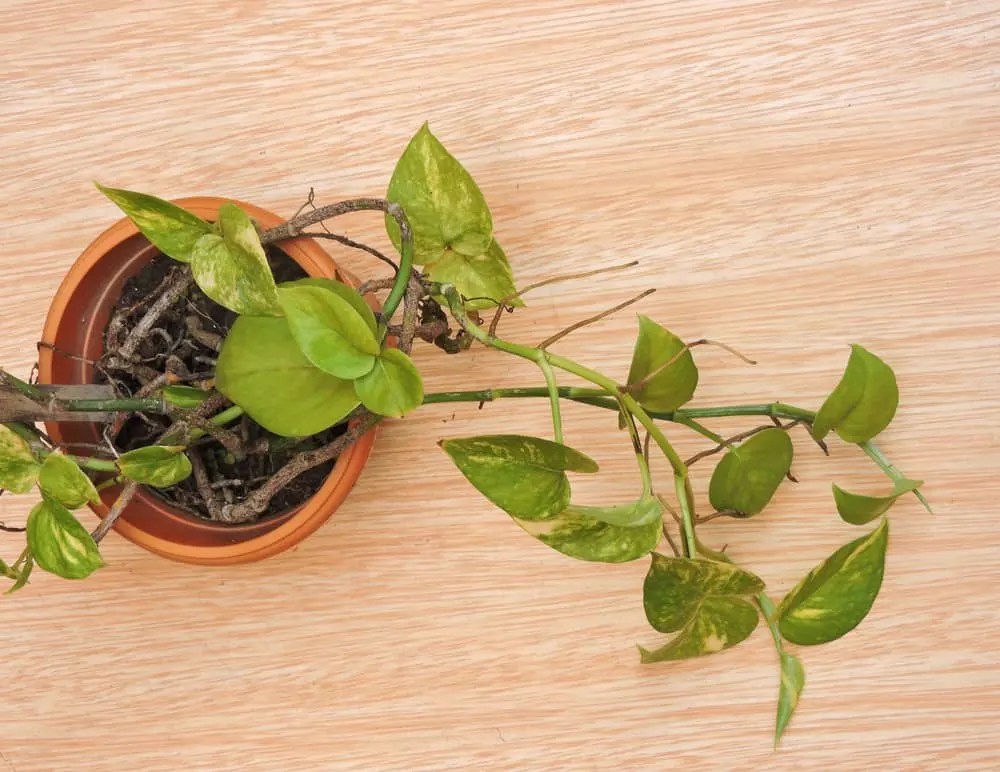
Pothos plants are quick growers. Most varieties will grow 12-18 inches every month during spring and summer under the right conditions. There are a number of reasons why this growth can slow or stop altogether, each with its own fix.
Pothos plants left in the same pot for several years can begin to outgrow the small space. Overgrown roots that appear above the soil line or grow through the drainage holes indicate the plant is rootbound. Rootbound Pothos plants have no more space within the pot to grow, becoming stunted.
A quick and easy repotting is all you need to resolve the problem. Remove the plant from the pot, shake off the soil and replant in a pot one or two sizes up at most. Water thoroughly after repotting to encourage new root growth.
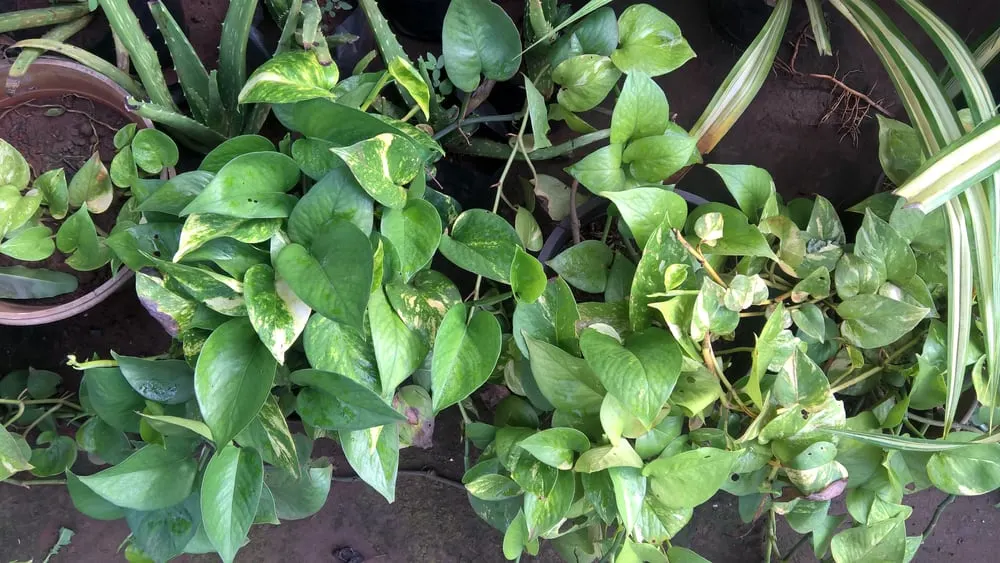
Lack of sunlight can also contribute to slow growth. Lower light levels mean less photosynthesis, which produces food in the form of sugars to keep the plant alive and spur growth. Less photosynthesis results in slower growth, which can stop altogether if there is no sunlight available.
Move the plant to a brighter spot but away from direct sunlight to improve growth.
Along with a lack of sunlight, lack of nutrients causes the same issue. Once the nutrients in the soil are used up or washed out, there is no way for the plants to access the essential nutrients they need to grow successfully.
After a few months of growth in the same pot, Pothos will require fertilizing to maintain the right nutrient levels in the soil. Apply a balanced liquid fertilizer around once per month in spring and summer to improve growth.
Pothos plants are generally trouble-free, but they can display some signs of stress due to incorrect care or pest and disease concerns. Keeping your Pothos in their preferred conditions will limit these problems and ensure your plant remains healthy year round.
Read Next: 10 Snake Plant Problems & How To Fix Them
